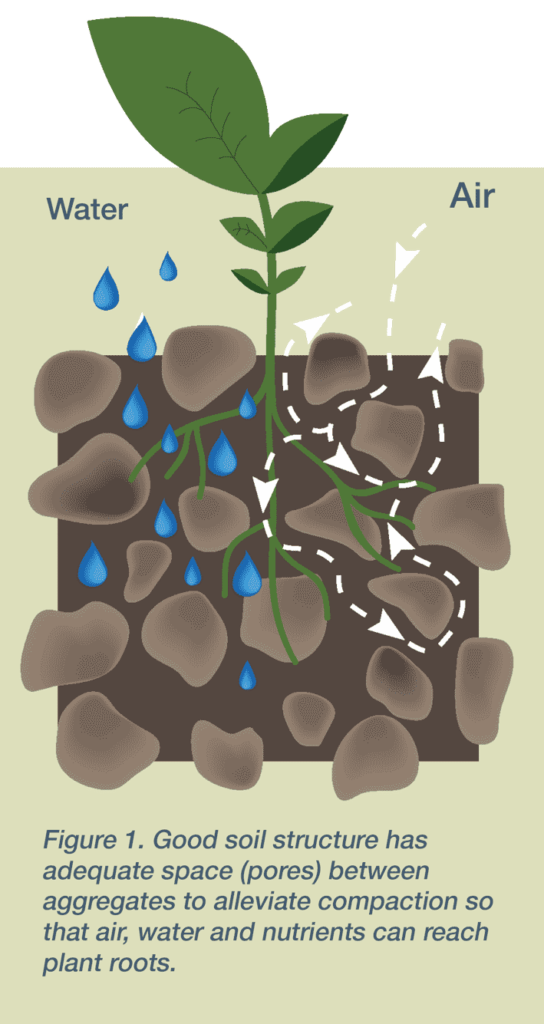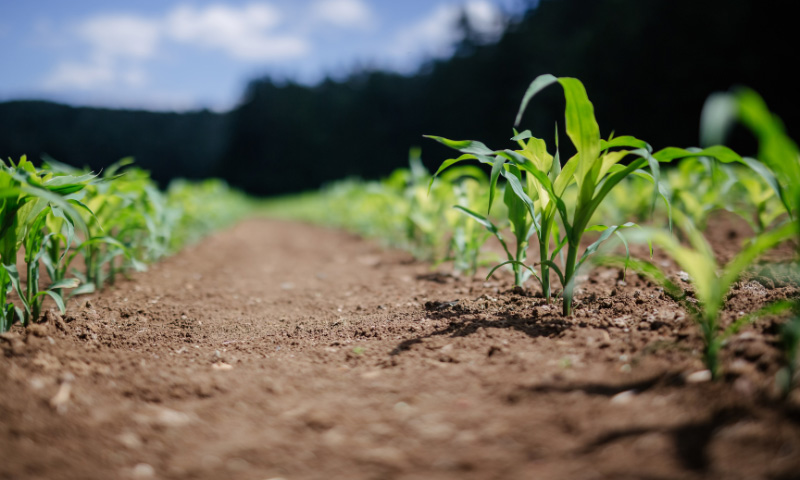It’s no secret that your land is one of your greatest assets, and the quality of your soil can have an instrumental impact on the value of your property. Land value is largely determined by its productivity, therefore implementing a soil management program and investing in strategies that address the underlying nutritional, biological and structural aspects of your soil should be a primary focus.

Let’s start with soil nutrition. After decades of farming, vital minerals and humus levels have become depleted from the soil, resulting in an ever-increasing dependence on fertiliser applications and other inputs. In a bid to resolve these concerns, we often see farmers splashing out $$ on unnecessary applications of lime, gypsum and NPK fertilisers, causing higher inputs of particular minerals that can negatively affect soil microbes and cause other minerals to become ‘locked’ or ‘tied up’. Undertaking a soil test helps to identify nutrient shortfalls and establish a tailored management program for remineralising deficient soil. NatraMin is a safe choice for assisting mineral balance and restoration of nutrients in soil.
Now let’s talk biological activity. An amazingly diversified array of soil organisms such as worms, arthropods, beetles, insects, and microbes work 24 hours a day, 7 days a week, 365 days a year for you for FREE… if your soil is healthy that is. Biological activity in the soil is essential for soil and crop health. Soil microbes and worm activity help to convert minerals into plant available form, restore soil pH balance, convert organic matter into humus, provide a storehouse for moisture and crop nutrients, and much, much more!
The better you feed your soil, the better you feed your workers.
Finally, let’s gain a better understanding of how poor soil structure has become one of the main issues affecting production. Soil structure problems can not only limit seed germination, plant establishment and growth, root development, and water infiltration, but has a direct influence on soil biology, nutrient availability, and the ability for nitrogen to be accessed by the plant.
Many strategies can help to improve soil structure and can be implemented today, including:
- Compaction control or prevention (including mechanical aeration)
- Avoid heavy grazing or ‘over-grazing’ by livestock
- Incorporate legumes and various species with varying root depths where possible to maintain sufficient cover in summer and/or dry periods and help break through compaction/tillage pans
- Avoid tilling and planting when wet
- Incorporate a broad-spectrum mineral fertiliser to assist in rectifying mineral imbalances/deficiencies and boost biology.
While soil nutrition, biological activity, and soil structure are all crucial to producing high-yielding crops and healthy livestock, it is water that most contributes to soil and plant health. Water is a precious commodity and making sure your soil and crops are getting the most out of it is crucial.
In scientific trials conducted at the University of QLD, NatraMin Cal-S was found to increase waterholding capacity by 7% and increase Plant Available Water Capacity (the water the root system can access from the soil) by 13%. It is a substantial benefit in dry or drought conditions, or when irrigation water availability is uncertain.
In the same trials, NatraMin Cal-S significantly increased yield response by 26.26% (Figure 2) when compared with the control group. Even more pronounced was the difference under the soil surface where dry root biomass increased by more than 39% in NatraMin Cal-S treated soil over the control.
Increased root growth has many significant benefits not only for the current plant, but also for ongoing soil health. Soil respiration data captured throughout the trial indicated using NatraMin provides additional environmental benefits, such as stabilising soil organic carbon and decreasing CO2 release.
Retired Lucerne Grower, Chris Harvey, transformed his previous property and doubled his yield by using NatraMin to improve the structure and balance nutrients within the soil. “When it came time to put the place on the market,” Chris said, “it was the soil and productivity that had the greatest impact”. On first inspection, the buyer commented, “This is the most sustainable operation with the best quality lucerne and yield data we’ve ever seen!”

In addition to increasing productivity of farming and grazing land, improving soil health can assist the appearance of land with fewer weed infestations, and greener healthier looking crops and pastures.

Is Soil Structure your most limiting Nutrient?
Whether it’s broadacre cropping, horticulture or pasture systems, soil structure is quite often the most limiting factor to producing high yielding, healthy plant populations.
In this video, we discuss the importance of soil structure. CLICK HERE TO WATCH
